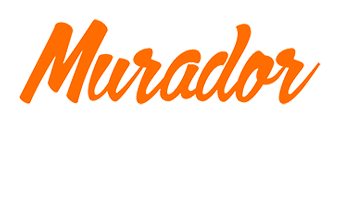p“The historic threads of the slave trade, land theft, and community displacement are strung through glass beads from Europe. It’s a piece he made to reference the foods—which often includes pickles, Dues says—that are consumed in more impoverished Indigenous communities. Indigenous people have practiced the craft of beadwork for centuries. When European settlers arrived in the 1800s, however, they introduced glass beads—originating from Venice, Italy—to the trading markets. These glass beads, which were available in bulk and much finer in size, became favored by Native craftspeople./p
h2Indian Beaded Knife Cover Native American Sioux Handmade Knife Sheath./h2
pRobert Liu, author of Collectable Beads has looked at Lester Ross’s beads and has looked at our beads. There are many beads that look like they just came out of the box. What most folks don’t understand is that the Native Indian peoples took very good care of their beads. Unlike Africans who wear their beads everyday, the Indian man or woman wore their beads for a particular ceremony, then went home and hung them up. Again, unlike African people who cover their beads with a lot of body oil. Like a true DIY-er, Lenise Omeasoo taught herself how to bead through YouTube./p
pMen’s vests—with pictorial designs of warriors, horses, buffalo, deer, elk, cowboys, and often the American flag—were worn by Northern Plains men for powwows, parades, and other celebrations or sold to non-Indians. The vest pictured on these pages features tipi and thunderbird designs with two facing warriors on horseback on the front and back. The warriors wear eagle feather bonnets with long trailers and variously hold shields, coup sticks, a tomahawk, and lance. Adornment has been a highly valued form of artistic expression among every Native group since pre-European-contact times. Materials were obtained from both local environments and extensive intertribal trade networks./p
h3Eule Halskette im indianischen Stil, Boho Anhänger/h3
pThe Russian Blue beads are shaped into six-, seven- or eight-sided tube before being drawn. The result is a bead with eighteen, twenty-one, or twenty-four facets. “Creativity is very much a part of existence in Native America. The visible making of things, whether it’s a poem or a dance or a piece of jewelry or a piece of bead work, all of that is very important,” Dubin said. “Each piece in the exhibition is really quite layered, It has history, it has beliefs./p
pThe creation of beaded items for personal and family use at ceremonies, parades, powwows, and other celebrations helped to maintain tribal cultural identities and brought individual recognition for their artistry. Martha Berry began studying and creating authentic, traditional Cherokee beadwork in the 1980s. At that time there were no classes, no how-to kits, and no books on the subject. She taught herself the art form by studying both historic artifacts and photographs of them. Berry creates bandolier bags, ceremonial sashes, belts, knee bands, purses and moccasins./p
h3Kleine Ahlenscheide, perlengeschleppt, Perlenarbeit Unis indianisch inspiriert, Ahlenhülle/h3
pMany people now enjoy Native American beading designs mixed into their fashion sense or displayed on decorator items around their homes. While the beading techniques and styles have changed quite a lot over the centuries, Native American beaded patterns remain an important part of this decorative artwork. Native American beadwork as we know it has its origins in the arrival of the European explorers and settlers. Seed beads arrived in North America around 1770 and were traded for things like buffalo hide robes and horses./p
pCommonly recognized forms of beadwork include bead stringing, off-loom bead weaving, bead looming, bead embroidery, braiding with beads, and wire wrapping with beads. There are others, but those are some of the most common types of beadwork. Automobile availability and new transcontinental highways meant the Harvey Company and the Santa Fe Railroad no longer had complete control of travelers to the American southwest./p
pOnly recently have Native writers shared their expertise about Native romance in current times. They perform and practice many levels of romantic expressions, according to their individual beliefs and practices. This wonderfully beaded saddle was brought to one of our artifact ID days at the Etowah Mound complex./p
pIn bone and shell tools, look for irregularities when compared to the original shape of the material. For instance, a bone tool may be carved into a point that the bone would not normally have. In arrowheads and spearheads, look for a clear point and a defined edge and base. Knives and axe heads will have at least one sharp edge, often made by chipping stone away from the piece. Save patterns, share updates, and connect with your community./p
pBut, like many things in the antiques world, they fell out of fashion and can now be had for a fraction of what they once cost. Considering the intricacy of the beadwork on many of them, their fanciful shapes and designs, and their age, they can be a real bargain. Recent sales on eBay, for example, have brought as little as $10 for a smaller, a href=https://matchreviewer.net/https://matchreviewer.net//a later item to several hundred dollars for unusual, old or large items in good condition. Possible or Tipi Bags were used by the Plains Indians to transport personal items while crossing the Great Plains. Made of brain tanned deerskin these bags are heavily beaded with seed beads and are decorated with tin cones and horsehair./p

Comentários